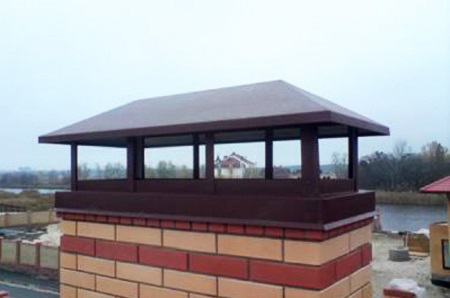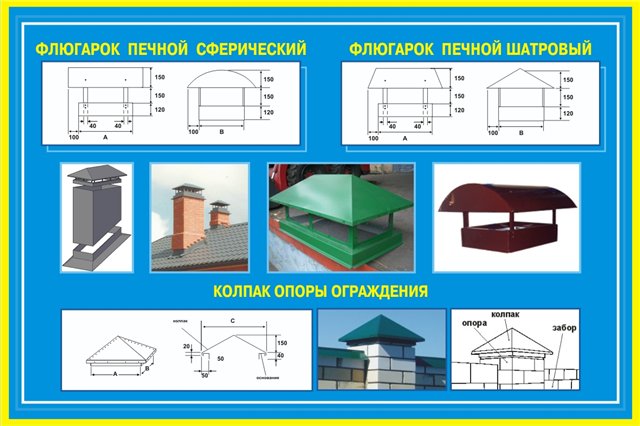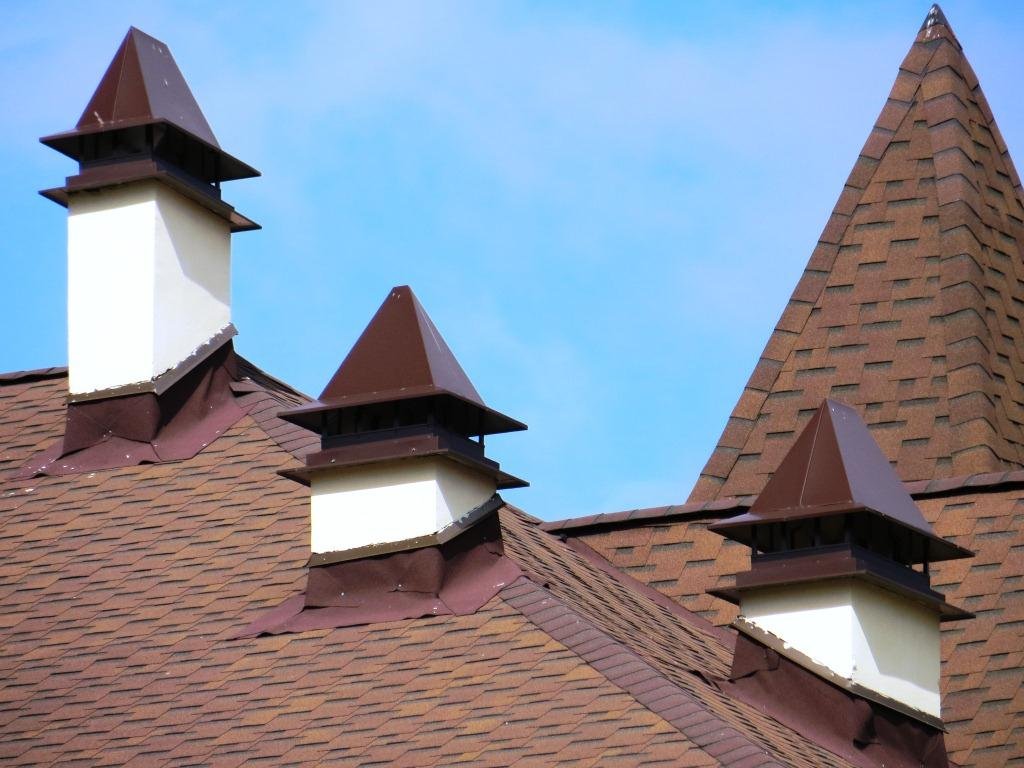A beautiful architectural element, according to which with a naked eye you can immediately see connoisseurs of delicate taste and lovers of all that is beautiful. A crowning chimney, it bears the imprint of antiquity and an element of modernity. It’s hard to overestimate its use both as aesthetic and as functional. Sometimes it can be taken, without fear, for an element of art. And such an invention of mankind is called - a flygar, a deflector, a chimney or just a cap on the chimney pipe.
Production of chimneys begins with the design and selection of material, and ends with the placement of a cap on its top. The cap on the chimney pipe gives the roof an originality, and the chimney - completeness. In addition, the air cup provides your chimney with the necessary protection. So let's try to figure out what other functions a fly-gun plays and is it really necessary?
Content
The purpose of the cap on the chimney pipe
We all play our part in this life. That flyugar is necessary in order to enhance traction, deflecting air currents and thereby maintaining a bright flame and warmth in your home. In addition, the deflector also protects the chimney from atmospheric and climatic phenomena such as slanting rains and snowfalls.

Ancient traditions of the east say that the chimney is the upper gate of the house, and therefore requires no less protection than the front door.
Thanks to the cap on the chimney pipe, you can avoid debris, birds and their nests getting into it. It is for this purpose that a grid is installed that prevents unwanted clogging, but freely passes smoke from the chimney.
Let's list all the functions of the hood on the chimney pipe:
- Traction amplification function in the chimney;
- Up to 20% higher efficiency of your chimney pipe;
- Protective function against garbage and weather conditions;
- Obstruction of the destruction of the chimney from the brickwork.

Chimneys with a pipe having a number of revolutions have the best draft, and not with a pipe with a direct stroke.
How is the hood arranged on the chimney pipe?

Like everything in this world, a flygar has not only its functions, but also a special device that allows it to perform these tasks. Most often, you can find flycars of two types of components:
- An umbrella on the chimney pipe or cover, which plays a major role in the protective function of the hood.
- A water outlet or, otherwise called, a drip, through which moisture is drained, flowing down the top of your chimney. In winter, this reduces the formation of ice in the chimney.
As you can see, the device is quite simple. The main thing: the correct observance of all proportions and the quality of the material from which the hood will be made.
A bit about materials
In the manufacture of windbreakers in the modern market, manufacturers most often use the following types of materials:
- Copper.
- Stainless steel.
- Galvanized iron.
Do not forget that the hood is located in a chimney in an inaccessible place. That is why it is worth so carefully selecting the material from which it will be made. After all, it is the flyugar that will protect the quality of the flame in the fireplace during long winter evenings and it is unlikely that you would like the fire to suddenly go out just because you decided to save on quality and the selected material could not withstand the climatic conditions.
If you believe the experts, the best qualities among the materials presented are copper caps.
All variety of flyorags
Today, craftsmen offer us from standardized caps to the most unusual, unique and custom-made. To disassemble each of them simply does not make sense. Let's look at the main categories of caps:
- Standard chimney hood. It looks like a gable roof of a house. One of the most common.
- Umbrella on the chimney. It has a conical shape.
- Flyugar with a flat top.
- Cap with a semicircular topping.
- Chimney hood with gable roof. In this case, the pipe has two slopes.
- Cap with a weather vane on top of the chimney. Has the greatest scope for the embodiment of your fantasies.
- Cap on the chimney opening lid.
Various constructional features and different materials give the flyboxes only some distinctive features and additional characteristics. Otherwise, they all perform the same functions and play the same role. When choosing a form, rather a sense of taste is important. It is difficult to say that one of the designs will be much better than all the others.

Flat copper finials, for example, are most often installed on Art Nouveau houses. The European style of houses is best combined with semicircular caps. Gable-roof hoods are best installed in snowy regions where winter rainfall is above average.
Weathercocks with a weather vane are also good because their design allows you to install a specially designed damper and during a strong wind to freely leave the products of the chimney of the chimney without polluting it. This means that you are less likely to have to clean your chimney.
Returning to cleaning, it should be noted that a smokestack with an opening lid will be most convenient in this regard, because it allows you to clean without hindrance, because it does not block the chimney in the open state.
Why do pipes smoke?
When the gusty wind intensifies, the process of blowing cold air into the chimney starts unpleasant for the owners. As a result of this, pressure is exerted on the exhaust smoke, the draft begins to fall substantially and more and more smoke does not leave the chimney, remaining there in considerable quantities.
Why can this happen? There are at least two explanations:
- The diameter of the chimney pipe was initially selected incorrectly.
- The chimney pipe is not placed correctly and the height of the pipe on the roof is too insufficient.
How does a chimney hood work?
A stream of air hits the wall of the upper cylinder, enveloping it from all sides.
Sliding along the surface of the cylinder, a stream of air wraps upward, at this time, sucking in the smoke that comes out of the chimney.
When the air moves inside the pipe, its intensity increases, due to which there is an increase in draft, which is especially important if you have a gas chimney.
If the wind flows are directed at an angle or vertically, and not horizontally, then the hood also performs its role in increasing traction. Penetrating through the gap into the upper cylinder, the wind flows suck smoke into the pipe.
If the wind under the cap is grassroots, then the formation of vortices may begin, slowing the exit of smoke.

In the case of a low wind, the installed reverse cone helps to reflect the air currents with smoke, dissecting and taking them out.
Pay maximum attention to the selection and installation of the windshield. Do not forget that the successful design of your chimney begins with the correct design of the project and the choice of material, and ends with a visor on the chimney pipe, which is no less important. Having fulfilled all the requirements once, you can enjoy the smooth movement of the flame in the hearth for many years, only from time to time maintaining cleanliness and order.





Alas, no comments yet. Be the first!